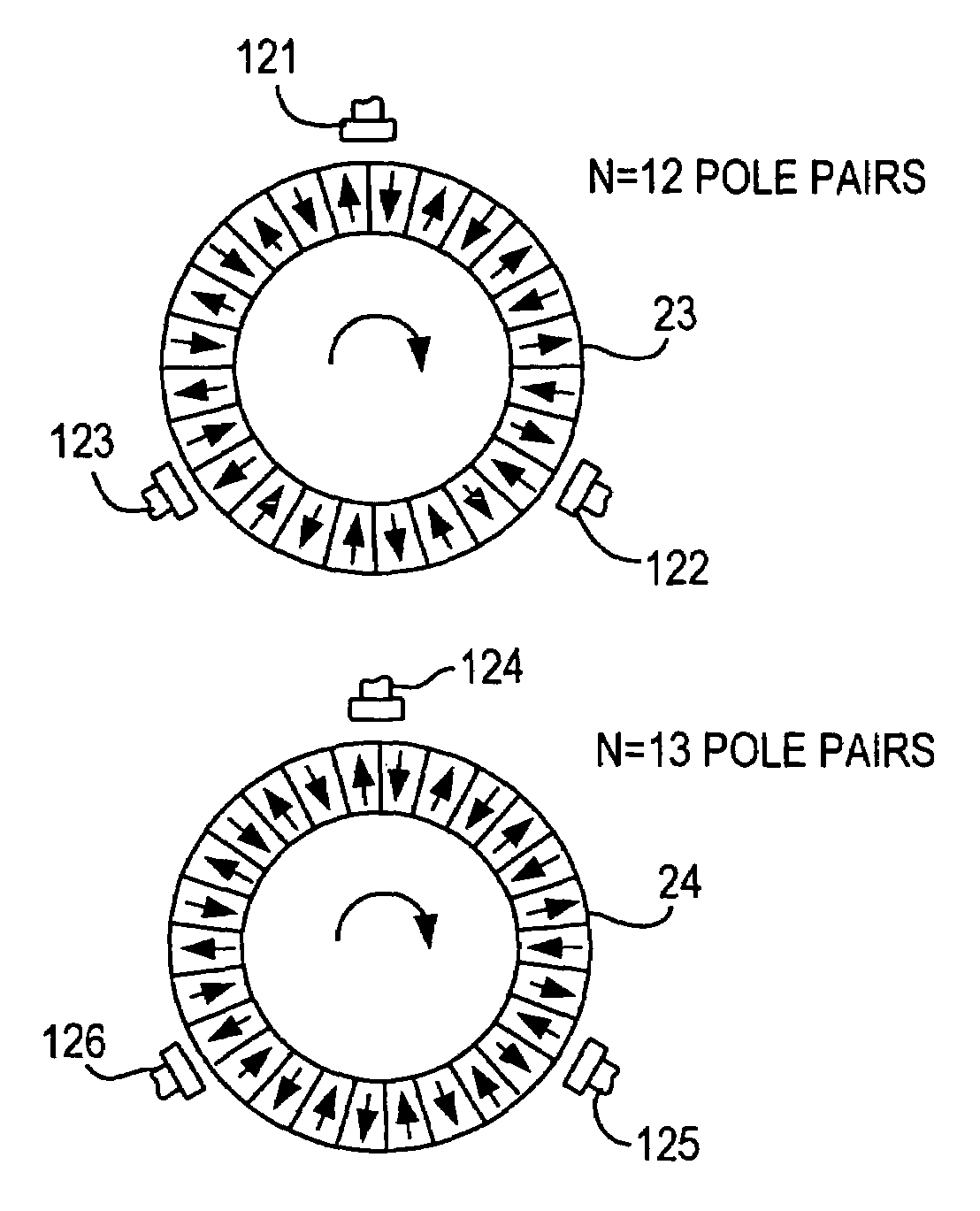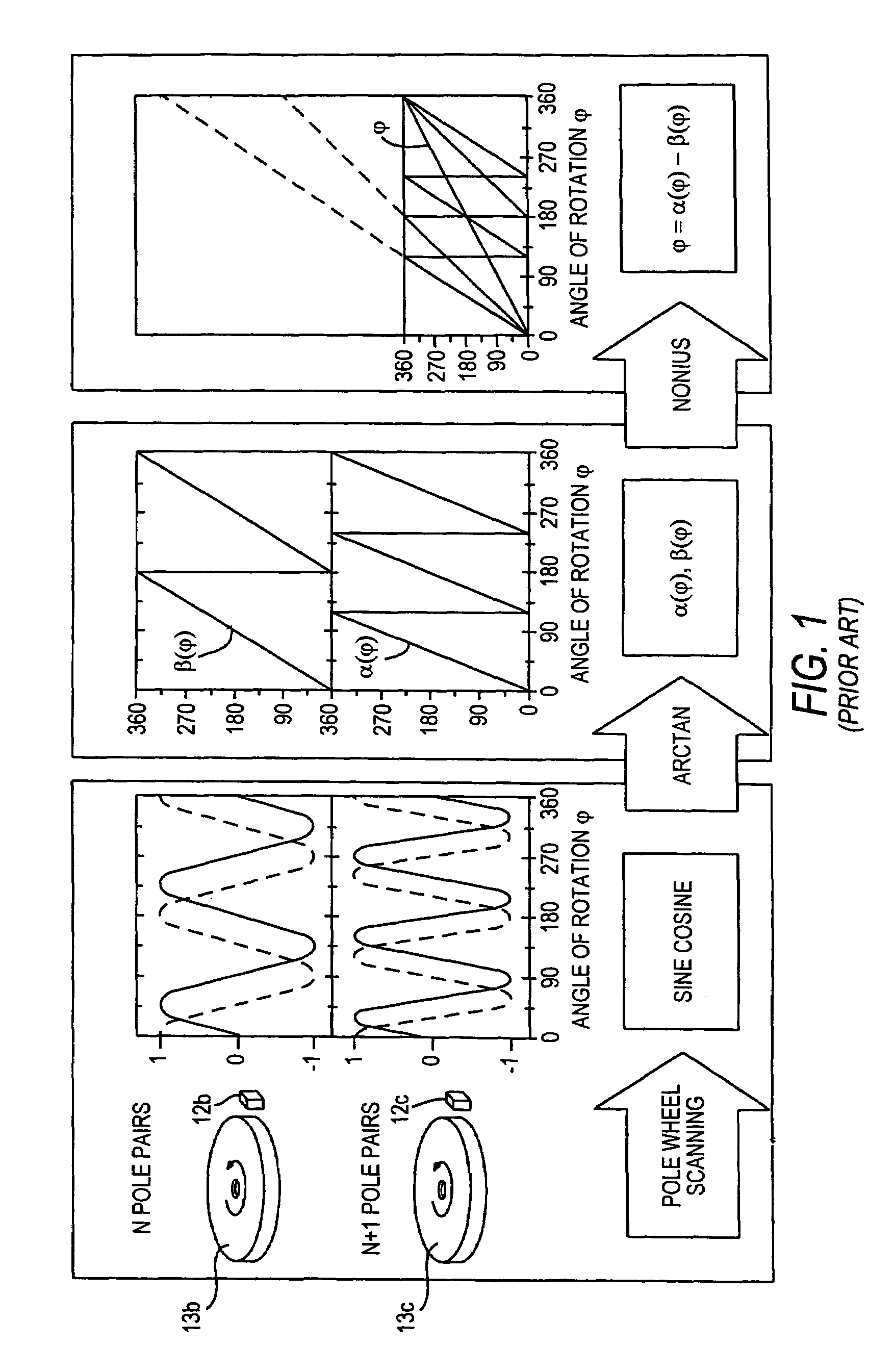Device and method for measuring angles
a technology of angle measurement and measuring device, which is applied in the direction of galvano-magnetic hall-effect devices, instruments, galvano-magnetic devices, etc., can solve the problems of limiting the accuracy of the system, polarization or tooth pitch errors, eccentricities, etc., and achieve the effect of reducing the error caused by tolerances
- Summary
- Abstract
- Description
- Claims
- Application Information
AI Technical Summary
Benefits of technology
Problems solved by technology
Method used
Image
Examples
Embodiment Construction
[0023]The drawing description below pertains to the special embodiment of scanning of a magnetic multipole wheel. However, the method can also be attained advantageously with other transducer wheels involving nonmagnetic or magnetic measuring principles. The measured values and measurement errors indicated below refer by way of example to pole wheels with n=12 and n=13 pole pairs, and with an outer diameter of 30.8 mm.
[0024]The measurement principle on which the invention is based will first be explained in conjunction with FIG. 1.
[0025]A steering column is embodied with a torsion bar. Concentrically to the torsion bar, three magnetic multipole wheels are provided. Upon a rotation of the upper part of the steering column relative to the lower part about its longitudinal axis, an angular displacement of the magnetic multipole wheel 13a occurs relative to the remaining magnetic multipole wheels. Disposed next to the multipole wheels is a sensor 12, which has three sensor elements 12a,...
PUM
 Login to View More
Login to View More Abstract
Description
Claims
Application Information
 Login to View More
Login to View More - R&D
- Intellectual Property
- Life Sciences
- Materials
- Tech Scout
- Unparalleled Data Quality
- Higher Quality Content
- 60% Fewer Hallucinations
Browse by: Latest US Patents, China's latest patents, Technical Efficacy Thesaurus, Application Domain, Technology Topic, Popular Technical Reports.
© 2025 PatSnap. All rights reserved.Legal|Privacy policy|Modern Slavery Act Transparency Statement|Sitemap|About US| Contact US: help@patsnap.com



